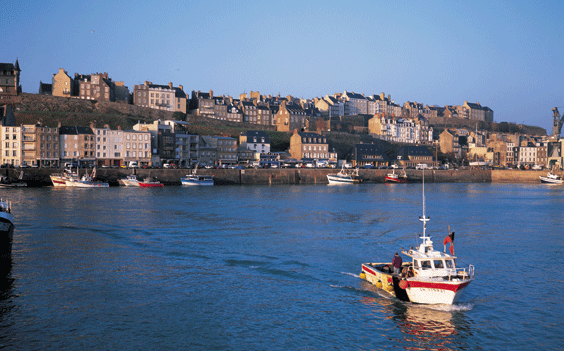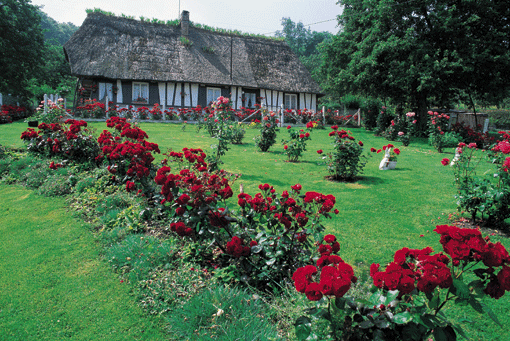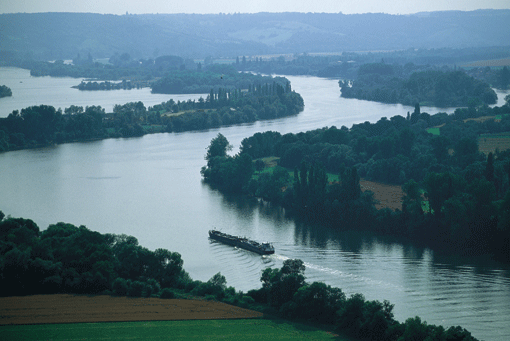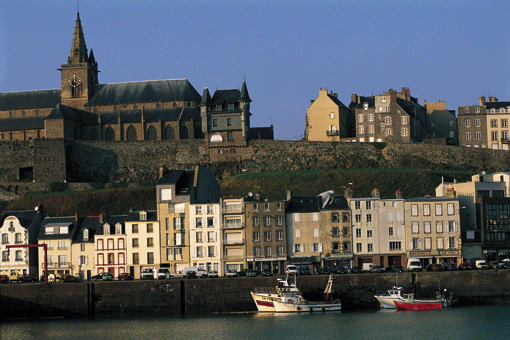
Travel
Normandy Rediscoverd

Think of Normandy in France and the first thing that comes to mind is the Allied landing
on its beaches in the Second World War. Those sandy beaches were immortalized in many
Hollywood movies, the most recent of which was “Saving Private Ryan” by director Steven Spielberg.
By: Osama Al Sharif
This summer I drove from Paris to the province of Normandy and its famous beaches, about 250 kilometers east of the capital. Normandy boasts more than 500 kilometers of dramatic coastline along the English Channel. This whole region was once the site of heavy German fortifications and bunkers, and it became the theater of one of the largest land invasions in modern history.
Leaving Paris we headed for Rouen cutting through agricultural areas and farmland. The province of Normandy is comprised of Upper and Lower Normandy, and the name is believed to be derived from the Vikings, the northern people, who in the 9th century conquered England and briefly united this region on both banks of the English Channel.
Being close to Paris, its beaches are a favorite destination for residents of the capital in summer. And because of its proximity to England the province is also popular with British tourists.
The Seine River runs through the region and as we took a diversion from the A 13 motorway we headed to a sleepy little cultural hermitage called Moulin d’Andé on the outskirts of Saint Pierre du Vauvray. Here the Seine is narrower as its murky waters cut through a lush green valley topped by old mansions with towers built in the traditional vernacular architecture typical to this region.
As we approached the Moulin the thick green forest encircled us and we soon stopped in front of a small building. Behind it perched over the river itself was the historic water mill, believed to be the oldest of its kind on the Seine.
As the last known example of a “Moulin pendent”, it is classified as a historic monument with its pulleys, millstones and screw jacks. Built in the 12th century to provide supplies to a nearby garrison, it was bought by Suzzane Lipinska in 1957 who oversaw its restoration. She turned the site and the nearby woods into a cultural hermitage for writers, poets, film directors and musicians.
Lipinska still runs the place, whose objectives she said is to provide a welcoming space for accommodation and work—artistic and intellectual, individually and within a group; and to offer a centre for cultural events and activities for the region.
The 15-hectare sanctuary is an ideal place for creative people, unique in preserving the 1960s sense of rebellion and freedom. I walked through the woods and imagined the celebrity visitors who came here over the decades. My companion told me that even the late Palestinian poet Mahmoud Darwish had stayed here and recited some of his poetry.
After lunch we drove back to the motorway and headed towards the twin cities of Deauville and Trouville on the coast not far from Omaha beach where the Allied landing took place.
On our way we stopped at the picturesque fishing village of Honfluer, popular with British tourists because of its proximity to the harbors of Caen and Le Havre and their feery service to the UK. Honfluer is reputed to be one of the most charming ports of Europe and it is famous for its cafes, excellent restaurants, art galleries, wooden cathedral and gardens. It is believed to be the birth place of impressionist painting and the names of Monet and Baudelaire are associated with it.
Being a fishing town it is famous for its fresh sea food, including shell fish, but one can find a variety of other delectable items on the menu.
After lunch we were heading to Deauville and Trouville, not far from Honfluer. Deauville is a glamorous resort town, home to the rich and famous, and is a thriving vacation spot of luxury hotels, race tracks, golf courses and polo grounds. Its beach is world renowned with its wide promenade, white sands, clean air and breathtaking views.
Its twin city, Trouville, separated from Deauville by the Touques River, is a more sedate fishing village, but is famous for its restaurants and shops.
We spent the night in a small motel in Trouville, but before going to bed we celebrated by treating ourselves to a good seafood meal at one of the local restaurants.
The next day we headed to Deauville, queen of the Norman beaches, and its famous beach. The town is affluent and its shows. Wealthy people from all over the world have villas or apartments overlooking the sea. It is a well-visited resort in the summer, but continues to attract visitors even in winter.
In September the town holds its annual film festival which many Hollywood stars attend. That is why the cabins on the promenade are named after movie celebrities. In December a new season begins at the race course. The countryside around Deauville is the main horse breeding region in France and is home to well-known stud farms.
One can take a bus tour to nearby Omaha beach, the Allied cemeteries and the museums and war memorials. But the one thing any visitor to this lovely town must do is to take a walk along the promenade and breathe the fresh air coming from the ocean. One can also ride a horse along the sandy beach.
There are many areas worth seeing and experiencing in the Normandy region including the world famous Abbey of Mont-St-Michel, perched precariously on a 264-foot high rocky islet, Dieppe whose exciting history is retold in the castle museum, HYPERLINK “http://westernfrancetouristboard.com/rouen.html”Rouen where William the Conqueror and Joan of Arc died and Caen with its celebrated War Memorial.
One can get to Normandy from Paris by car or train and there are domestic flights to a number of cities. Normandy is worth a short visit anytime of the year.